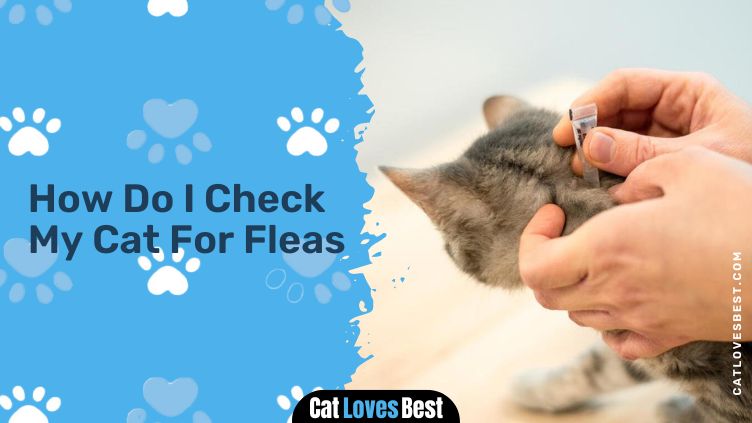Just like we take care of our babies, cats are also just like them. Our cats need extra attention in many aspects of their life. Some can keep themselves clean by grooming consistently.

When under any kind of problem, our fur babies do not have the ability to tell us what is bothering them. Here is where we step in. We would have to recognize changes in their behavior and act accordingly.
Cat flea is one such issue in our cat’s life.
Let’s talk about their experience, and dig into this part of our cat’s life.
What Are Fleas?
Fleas are wingless parasites, that consume blood from the host. Although your cat may stay indoors all the time, they can still get fleas on their body. These little critters can stay at any place where there is enough humidity and shade, waiting for an opportunity to jump on a host.
“If not taken care of, they can be troublesome for all your pets at home.”
How Did My Indoor Cat Get Fleas?
Cat fleas or Ctenocephalides felis are the most common among other fleas other than dog fleas.
You can find them all over the world, they live in places where they can find humidity and shade like in shrubs, grass, sand, etc.
Fleas can be transmitted through contact or if our cats sit in a place where some infected cat sat before. However, fleas don’t have wings to fly, hence they cannot spread through the air. There is another way fleas can be transmitted. Not only from cats, but they can also be transmitted from other wildlife like birds, pigs, raccoons, squirrels, rabbits, etc.
Fleas can lay up to 50 eggs a day when on any host. Eggs are not attached to anything, hence they might fall down on the ground or on another host.
Life Cycle of a Flea
Fleas have 4 stages in their life, egg, larvae, pupa (cocoon), and adult.
After hatching, they enter a larval stage where they will remain in this state for about 1-2 weeks, Subsequently, they will develop into a pupa, or in other words, a cocoon. After which they will develop into adults in 1-2 weeks.
A flea can develop from an egg to its adult phase in just a month.
Under ideal conditions, fleas can live up to 1 year on the host, whereas fleas that are not attached to a host can die in about 2 weeks.
If they are attached to the host, will start feeding on them and adult females will start producing eggs.
How Do I Check My Cat For Fleas?
If you see behavioral changes in your cat followed by intense scratching in some areas, you should check on her fur, especially the areas near her armpits and groin. These areas remain warm and are least bothered. If your cat is infested, then it is more likely that you will find fleas in these areas.

There are flea combs available in the market, you can invest in them. They have very fine gaps in between, just enough to trap flea eggs and flea in them.
If you find reddish-brown dots just the size of a pinhead on your cat’s fur moving and jumping around, yes, that would be a flea. You should start treating your cat as soon as you see them.
Are Fleas Dangerous?
Flea infection can lead to many problems for your cat. You might not have heard this before, but there are chances of getting anemia, which can lead to death if not taken care of. Here are some of the diseases our cat might get if infested by fleas.
Flea Allergy Dermatitis (FAD)
Flea Allergy Dermatitis is an allergenic reaction to flea bites, one of the most common disease seen around the world when it comes to flea infections. This allergy is caused by flea saliva entering our cat’s skin. After they feed on their blood, they inject saliva into the host’s body, their saliva contains proteins and antigens which make their skin itchy.
On scratching the infected part they damage their own skin which leads to bacterial infection, which in turn can also cause many other complications.
Tapeworm
Tapeworms are flat, long, and white-colored worms. They have hooks on the front, which help them attach to the cat’s intestine. They can grow up to around 28 inches (ca. 71 cm) long, but the average size is closer to 7-9 inches. Furthermore, they feed on nutrients passing through your cat’s intestine.
A cat might eat tapeworm-infected fleas on her skin while grooming herself, or they can also get infected by eating other small animals like rats, squirrels, etc.
Bartonella
Bartonella infection can cause chronic inflammatory conditions like inflammation of mouth, gums, and inflammatory bowel disease. Although many cats have this bacteria in them, they never get any symptoms.
These bacteria can also travel into our bodies when an infected cat bites or scratches us.
Regular flea preventative medicines or liquids prescribed by veterinarians can help prevent Bartonella infection in cats.
Anemia
Consider anemia as a warning that your cat is suffering, it can result in demise if not treated immediately. Anemia can happen when there is a severe infestation of fleas. With such an infestation, the cat experiences very severe blood loss and therefore is not able to recover from it. This usually happens with older cats or young kittens.
Anemia is a condition where there are not enough blood cells to transport oxygen to the body.
If your feline is suffering from flea infestation, I strongly suggest you consult a veterinarian as soon as possible.
If a cat is lethargic, has pale gums, skin bruises, dark blood in stool, and vomit, these can be the symptoms of anemia. But hey, if they have so much infestation of fleas that she got anemia, then definitely you would be able to see them on her fur. However, some cats would have long hair, and fleas might not be visible until you check.
Solution for Indoor Fleas
Cat fleas are the most common among all other fleas. You can find them all over the world, They live in all the places where they can find humidity and shade like in shrubs, grass, sand, etc.
If you have a garden, you should mow it regularly and allow more direct sunlight to it, which makes it more difficult for fleas to live. Along with this, try to regulate the moisture level as much as possible and spray pesticides where needed. This will solve most of your flea problems.

For your cat, if she is infected with fleas, you can spray lemon water on her. Just add some lemon slices in boiling water and spray it on your cat, as lemon is acidic in nature, it would kill most of the fleas.
One more remedy you can use is lavender, you can grow lavender in your garden, and it will keep fleas out as they hate it. You can also make its spray and use it on your cat, it’ll keep fleas away. Plus point is your cat will smell good.
There are various flea medicines in the market you can invest in them, however, if you are still confused, you can always consult your vet.
FAQs
Can cat flea travel from one cat to another?
Yes, cat fleas are nasty little jumpers, they can travel from one cat to another. If some infected cat comes in contact with your cat, these buggers can transfer themselves to your cat.
These little bugs have can cover almost 13 inches (ca. 33 cm) in one jump. So keep your cat farther away from infected animals.
What happens to cats with untreated fleas?
If your cat has these unwanted guests on her fur and is not treated, the infection can grow up to a point where your cat can get Feline Homotropic Mycoplasmosis, get anemic, or suffer from other deadly diseases, which can lead to death.
Do fleas cause pain in cats?
Just like we react to insect bites, cats do feel the same, after flea feeds, they inject some saliva into the cat’s skin, which is very irritating and painful for them, they will keep scratching and biting the areas infected. Which can lead to further skin damage followed by bacterial infections.
Do fleas make cats depressed?
Fleas drive our cats crazy, they can feel them crawling around and biting constantly. Your cat would feel itchy, above that, they will remain agitated and irritated all the time. Imagine what would we feel if some bug is continuously crawling and biting us, we can still complain about it while our cats cannot.
Conclusion
Confidently, we were able to serve you the appropriate content regarding the development of fleas in your kitty’s body. Keep a regular check on your kitten and make sure you take all the precautions necessary to keep your kitten healthy.
References
- Flea control in cats — icatcare.org
- Tapeworms — cdc.gov
- Bartonella — cdc.gov
- Life Cycle of fleas — Companion Vector-Borne Diseases

